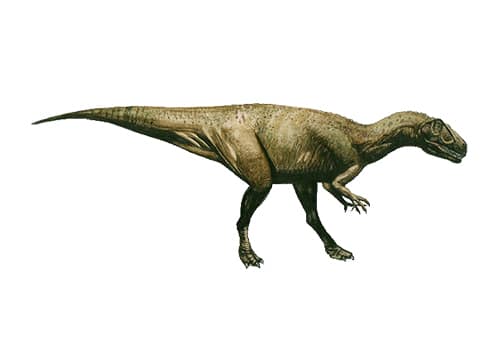Eustreptospondylus


Name: Eustreptospondylus
Pronounced: Yoo-strep-to-spon-di-lus 
Meaning: Well curved vertebra
Type: Large Theropod
Length: 4.6 - 7 meters long
Diet: Carnivore
Period: Mid Jurassic
Years: 165 million years ago
Location: United Kingdom
Description: Eustreptospondylus is a genus of medium-sized, carnivorous dinosaur that lived during the Middle Jurassic Period, about 170-165 million years ago. It was a member of the group of dinosaurs called the theropods, which includes some of the most fearsome predators that have ever lived. Eustreptospondylus was a sleek, agile dinosaur, with an estimated length of about 20-30 feet and a weight of up to 2-3 tons. It had a long, narrow skull with sharp, serrated teeth, and long, powerful legs with sharp claws. It had a long, flexible tail that it likely used for balance and agility while hunting. Eustreptospondylus is known from a number of well-preserved fossil specimens, including several complete skeletons and skulls, which have helped paleontologists learn more about the anatomy and behavior of this dinosaur. It is known from England and Wales, and is named after the Greek words 'eu', which means 'well', and 'streptos', which means 'curved', in reference to its well-curved spine. Eustreptospondylus was a formidable predator, feeding on a variety of prey including small dinosaurs and other animals. It is considered a primitive theropod, and is thought to be closely related to other members of this group such as Megalosaurus and Allosaurus. Eustreptospondylus is important because it is one of the few known theropods that is known from well-preserved fossil specimens, and provides important evidence for the evolutionary relationships and diversity of these animals. It is also significant because it is one of the few known dinosaurs that is known from England and Wales, and helps to shed light on the diversity of dinosaurs in this region. Eustreptospondylus is also important because it is one of the earliest known members of the theropod group, and provides important evidence for the early evolution of these animals.
Loading images from Wikipedia
Loading a Random Dinosaur...


